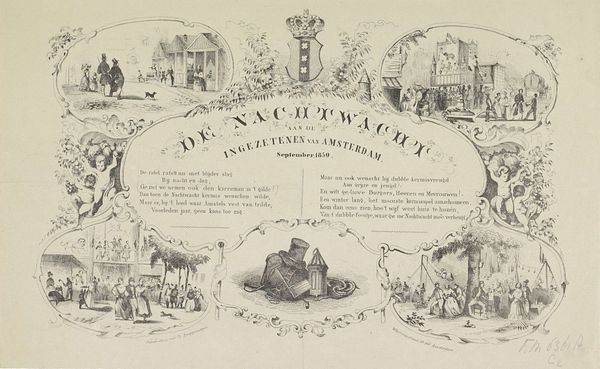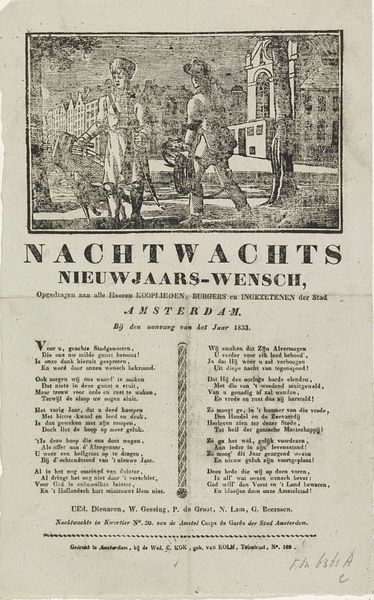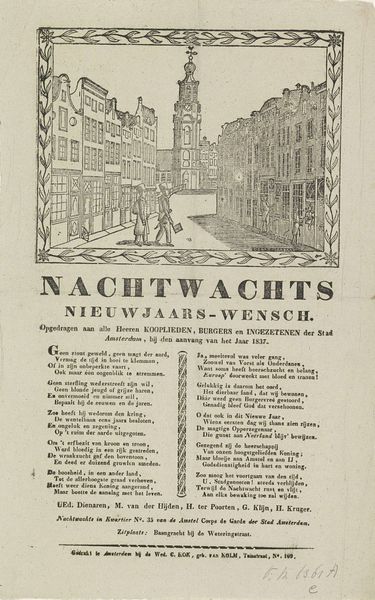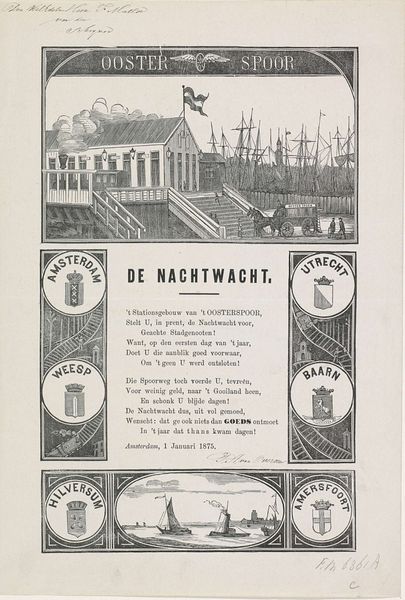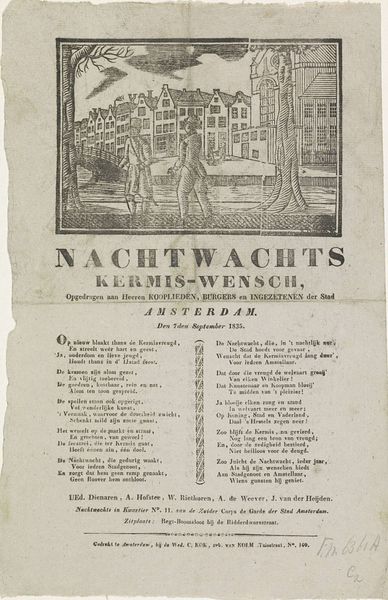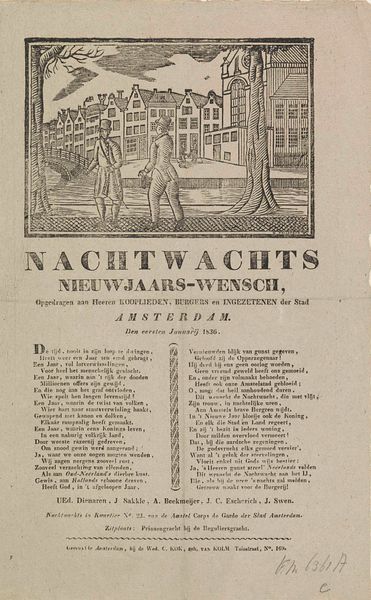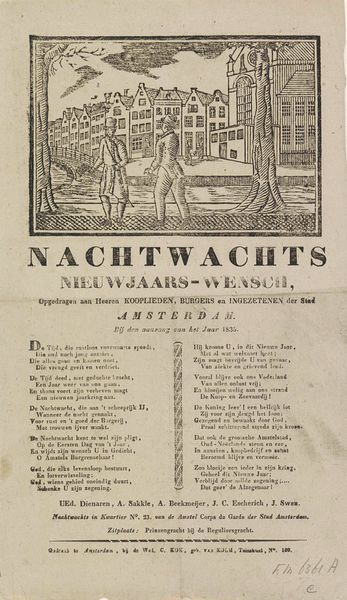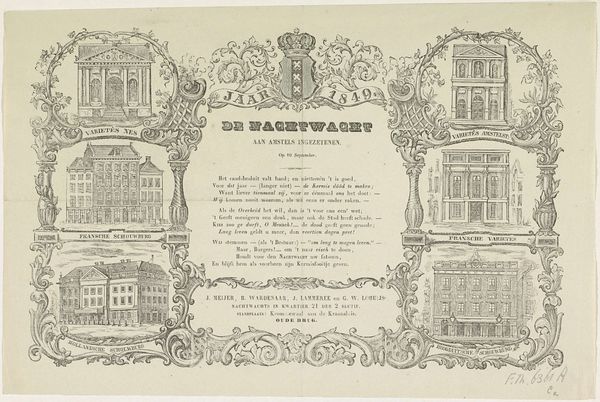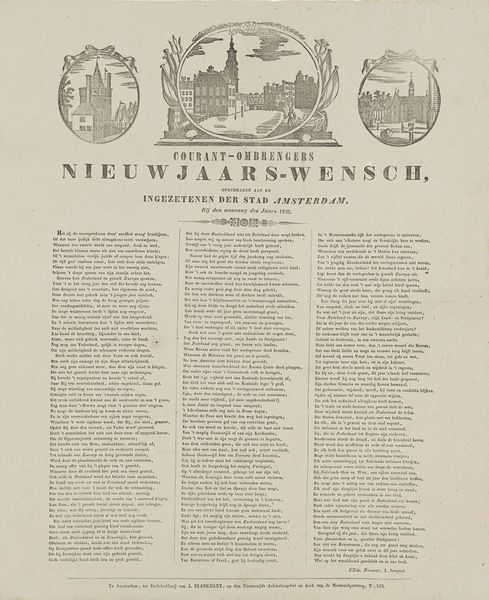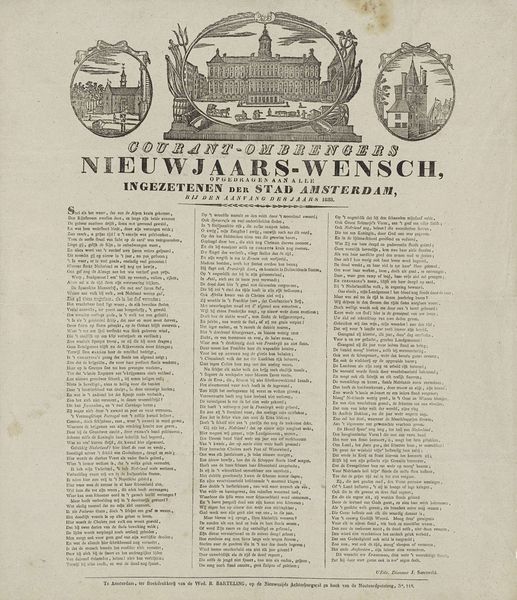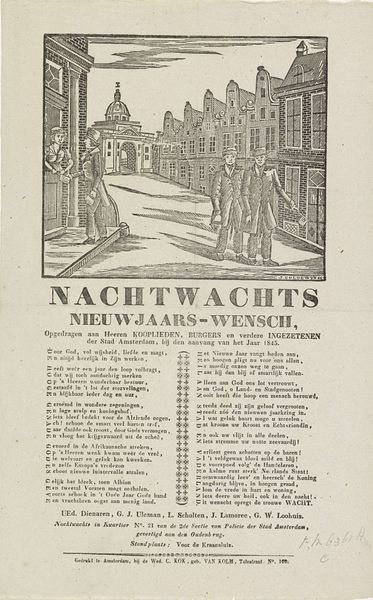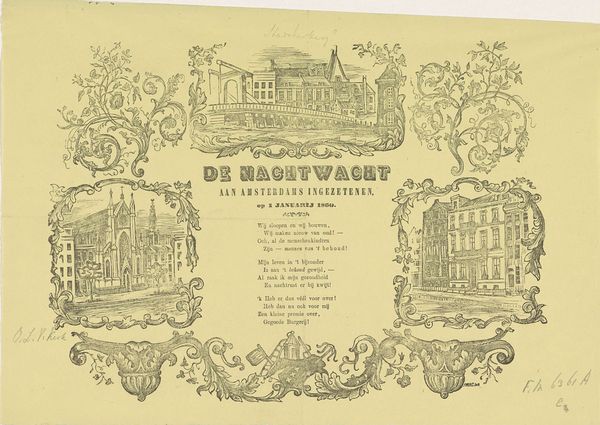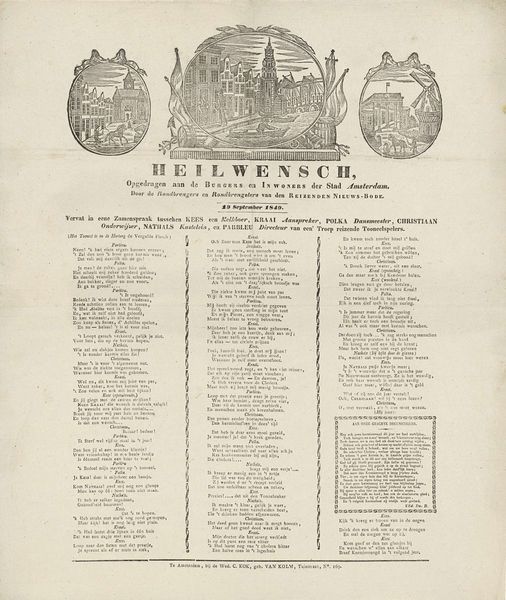
graphic-art, print, engraving
#
graphic-art
#
quirky sketch
#
narrative-art
#
dutch-golden-age
# print
#
old engraving style
#
sketch book
#
personal sketchbook
#
sketchwork
#
pen-ink sketch
#
pen work
#
sketchbook drawing
#
cityscape
#
storyboard and sketchbook work
#
sketchbook art
#
engraving
Dimensions: height 207 mm, width 317 mm
Copyright: Rijks Museum: Open Domain
This New Year's greeting from the Amsterdam night watch for 1851, was made with a printing press, likely etching or engraving. These were key technologies in the 19th century, enabling the mass production of images. Look closely and you'll notice the linear quality of the image. Each line represents a deliberate mark made by the artist, and the density of these lines creates shading and depth. But beyond the aesthetic, we should consider the social context. The night watch, responsible for the city's safety, used printmaking to communicate with Amsterdam's citizens. This shows how industrial processes could be used for civic communication. Consider the labor involved. From the artist who created the design, to the printmakers who operated the presses, each contributed to the final product. In those times, the printmaking industry offered employment opportunities for skilled workers, playing a crucial role in the economy. It reminds us that art is never created in a vacuum, but is always shaped by the materials, processes, and people involved in its making.
Comments
No comments
Be the first to comment and join the conversation on the ultimate creative platform.
